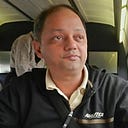Veer Savarkar and India House, London
For Vinayak Damodar Savarkar and other revolutionaries and nationalists, India House at 6, Cromwell Avenue in Highgate, North London, was a hub for political activism.
India House was inaugurated on 1 July 1905 by Henry Hyndman in a ceremony attended by, among others, Dadabhai Naoroji, Charlotte Despard and Bhikaji Cama. When opened as a student-hostel in 1905, it provided accommodation for up to thirty students. In addition to being a student-hostel, the mansion also served as the headquarters for several organisations, the first of which was the Indian Home Rule Society (IHRS). With the patronage of lawyer Shyamji Krishna Varma, it was opened to promote nationalist views among Indian students in Britain. This institute used to grant scholarships to Indian youths for higher studies in England. Vinayak Damodar Savarkar, a law student who had first arrived in London in 1906, was on a scholarship from Krishna Varma.
The building rapidly became a hub for political activism, one of the most prominent for overseas revolutionary Indian nationalism. “India House” came to informally refer to the nationalist organisations that used the building at various times.
Prominent revolutionaries and nationalists at India House
Patrons of India House published an anti-colonialist newspaper, The Indian Sociologist, which the British Raj banned as seditious. A number of prominent Indian revolutionaries and nationalists were associated with India House, including Vinayak Damodar Savarkar, Bhikaji Cama, V.N. Chatterjee, Lala Har Dayal, V.V.S. Aiyar, M.P.T. Acharya and P.M. Bapat. In 1909, a member of India House, Madan Lal Dhingra, assassinated Sir W.H. Curzon Wyllie, political aide-de-camp to the Secretary of State for India.
Crackdown by the British Police
The investigations by Scotland Yard and the Indian Political Intelligence Office that followed the assassination sent the organisation into decline. A crackdown on India House activities by the Metropolitan Police prompted a number of its members to leave Britain for France, Germany and the United States. Shyamji Krishna Verma left for Paris in 1907; he never returned to Britain. Many members of the house were involved in revolutionary conspiracies in India. In the coming decades, India House alumni went on to playing a leading role in the founding of Indian communism and Hindu nationalism.
Savarkar at India House
After Shyamji Krishna Varma’s departure, the organisation found a new leader in Vinayak Damodar Savarkar. Savarkar was an admirer of the Italian nationalist philosopher Giuseppe Mazzini and a protégé of the Indian Congress leader, Bal Gangadhar Tilak. He was associated with the nationalist movement in India, having founded the Abhinav Bharat Society (Young India Society) in 1906 while studying at Fergusson College in Pune. In London, Savarkar’s fiery nationalist views had at first alienated the residents of India House, most significantly V.V.S. Aiyar. Over time, however, he became a central figure in the organisation. He devoted his efforts to writing nationalist material, organising public meetings and demonstrations, and establishing branches of Abhinav Bharat in the country. He kept in touch with Bal Gangadhar Tilak in India.
Savarkar was arrested in 1910 for his connections with the revolutionary group India House. Following a failed attempt to escape while being transported from Marseilles, Savarkar was sentenced to two life terms of imprisonment totalling fifty years and was moved to the Cellular Jail in the Andaman and Nicobar Islands.
Source : (1) Shri. Vasudev Godbole, London (2) Wikipedia
Acknowledgement : It was Shri. Vasudev Godbole from London, who took us to India House.
Related Links :
